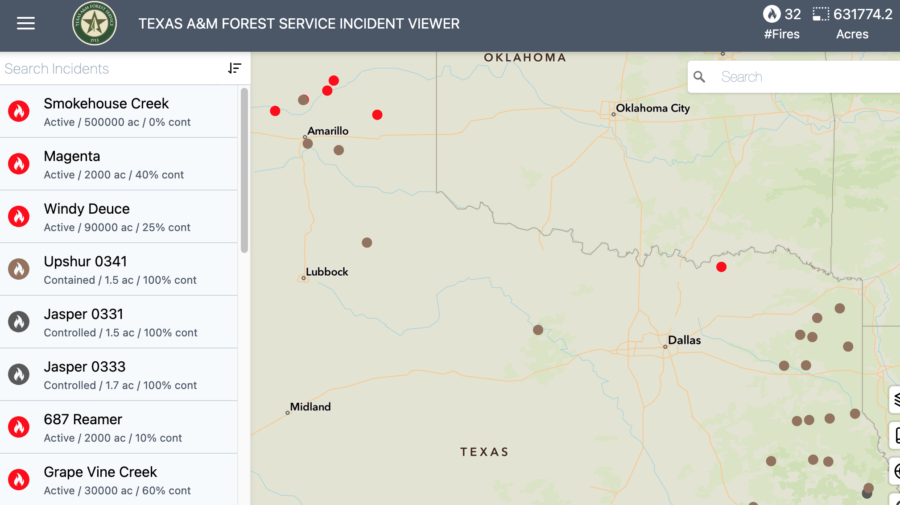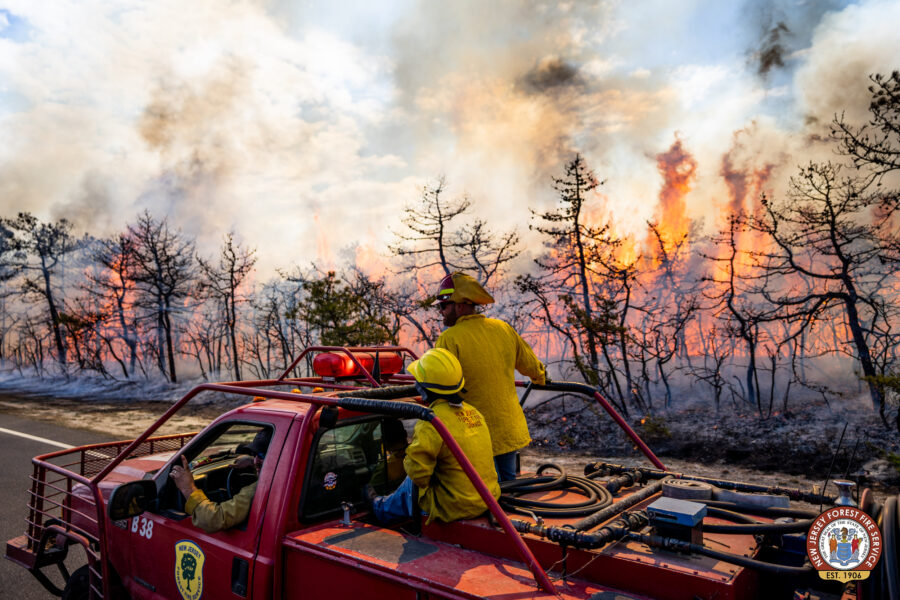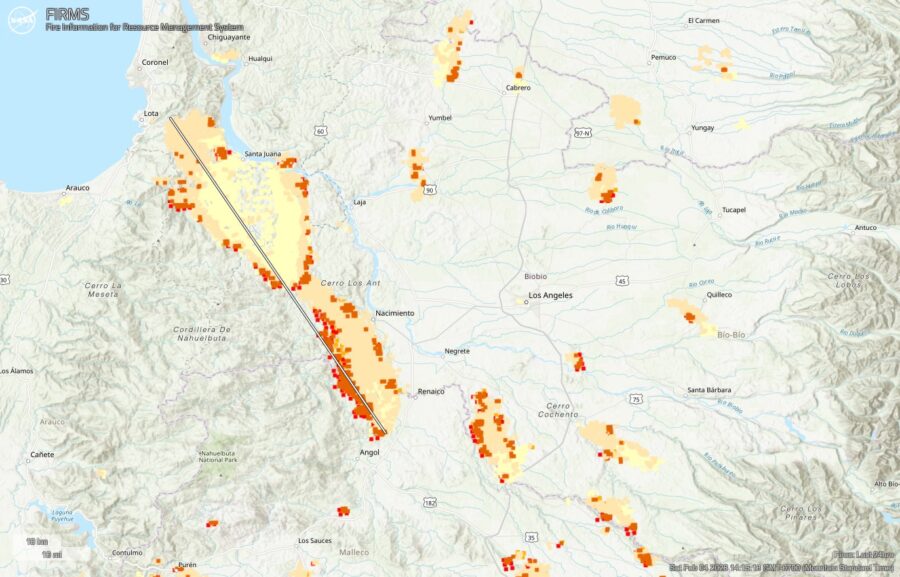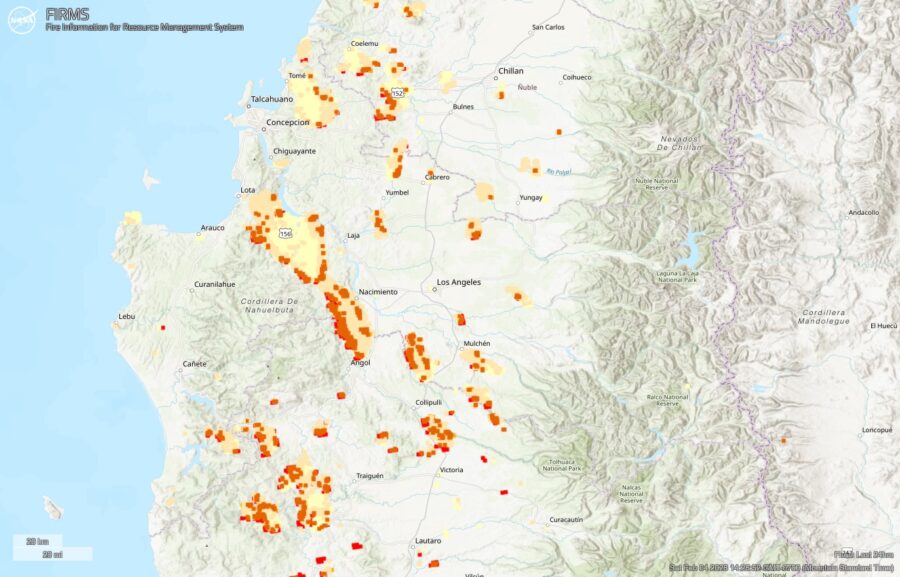WEDNESDAY EVENING UPDATE FROM CNN:
Fires burning in the Texas Panhandle and in Oklahoma have evacuated towns and killed at least one person. The 850,000-acre Smokehouse Creek Fire started Monday and is now 3 percent contained; it’s the second-largest fire in the state’s history.
Wildfires in the Texas panhandle are burning rapidly across drought-parched miles of grassy fuels, threatening towns and evacuating residents. How did the state’s second-largest fire ever burn to well over a half-million acres in just a couple days?

High winds and drought, mostly, according to the National Weather Service’s Amarillo office. The East Amarillo Complex in 2006 burned over 900,000 acres — in the same general location. Samuel Scoleri, a forecaster at the NWS, told Isabella O’Malley with the Associated Press that dry winters are fairly standard in the Panhandle, but temperatures on Tuesday were in the 70s rather than the usual 50s and 60s for late February. “It kind of just feels out of the ordinary,” he said, “considering at the top of the month we had places get almost half a foot of snow down south.”
Politico reported that the largest of the fires, the Smokehouse Creek Fire, closed highways and a nuclear weapons site. The Pantex facility for assembling and disassembling the country’s nuclear arsenal shut down operations Tuesday night as fires burned near its facility 30 miles east of Amarillo. Pantex issued a statement online saying it had paused operations until further notice.

The Smokehouse Creek Fire near Stinnett was first reported Monday evening; USA Today said by Wednesday the fire had grown to about 500,000 acres — twice its estimated size on Tuesday evening — and was still at zero containment, according to the Texas A&M Forest Service.
ABC7 News reported that Texas Governor Greg Abbott announced a disaster declaration yesterday for 60 counties, including all 26 counties in the Panhandle.

Officials are warning those who evacuated from the town of Fritch ahead of the Smokehouse Creek Fire that destruction there is considerable. “People who live in the Fritch area are probably not going to be prepared for what they’re going to see as they pull into town,” said Deidra Thomas with the Hutchinson County Emergency Management. “There are still homes that are on fire.” The main road into the south side of Fritch is still closed. “Right now, we can’t let you in,” she said. “It is not safe to do that.”

The governor also directed the Texas Division of Emergency Management (TDEM) to activate emergency response resources for local firefighters battling the multiple fires. “I issued a disaster declaration today to ensure resources are deployed to areas in the Texas Panhandle,” said Abbott.
Strong winds, unseasonably high temperatures, and dry grass are fueling the fires. Hot and dry and windy conditions should continue in the region in the coming days.

Dry conditions and above-normal temperatures resulted in parts of the state facing increased fire risks, according to the Texas A&M Forest Service. Several wildfires across the Panhandle started on Monday, and the Forest Service responded to 13 new requests for assistance on wildfires burning nearly 80,000 acres across the state. CNN reported that the Smokehouse Creek Fire burned 500,000 acres in under 48 hours and forced evacuations in multiple counties. That’s more acres than the combined total of all Texas fires for 2023. Numerous homes on the perimeter of the town of Canadian were burned, Hemphill County Judge Lisa Johnson told The Canadian Record.
The Associated Press reported that fires tore through sparsely populated counties on the High Plains dotted with oil rigs and cattle ranches. By this morning wind speeds had decreased and the humidity has risen. Northwest winds are predicted throughout the morning, shifting to the east around 6 mph late in the afternoon, then to the south late in the day. Forecasters warned there’s also potential for wildfire fire activity in East Texas, the Rolling Plains, and western Cross Timbers, and fire conditions will likely pick up and increase again by the weekend.
There are currently 63 counties with burn bans in place.
~ Thanks and a tip of the hard hat to Jim, Brian, and Patrick.




